
Roots
Consider for a moment the very strands that crown our heads, a living archive of generations, a testament to journeys across time and continents. For those with coiled hair, this inheritance stretches back beyond recorded history, murmuring secrets of sun-kissed lands and ancestral hands. How do these ancient ways, these cherished ingredients, lend their strength to coiled hair heritage today?
This contemplation begins not with bottles on a shelf, but with the earth itself, with the wisdom passed down through whisper and touch, with the very fabric of our being that remembers its origins. We speak of a continuity, a legacy residing within each curl, each twist, each resilient coil, nurtured by gifts from the land.

The Micro-World of Coils An Ancestral Lens
To truly grasp the lasting support traditional ingredients offer, we must first look closely at the architecture of coiled hair, a marvel of natural design. Unlike straight hair, which presents a smooth, circular cross-section, coiled strands display an elliptical shape. This elliptical contour, alongside the manner in which the hair follicle itself curves, directs the strand to spiral as it grows. Such a unique structure means fewer points of contact between adjacent strands, reducing the natural transfer of scalp oils down the hair shaft.
The outer protective layer, the cuticle, tends to lift more readily on these curves, exposing the inner cortex. This arrangement means coiled hair often thirsts for moisture, more so than its straighter counterparts.
Ancient practitioners, without microscopes or chemical analyses, intuitively grasped these fundamental truths. They observed the visible signs ❉ hair that craved moisture, that could be prone to breakage if left uncared for, and how the strands formed tight, spring-like formations. Their remedies were not random; they were direct responses to these observed behaviors of the hair.
They looked to their immediate environments, discerning which plants, which oils, which earth-derived elements offered succor, protection, and sustenance for these particular hair structures. A lineage of observation and practical wisdom informed their choices.

Beyond the Numbers Cultural Classifications
The language of hair texture in contemporary discourse often employs a numerical and alphabetical system, a useful modern shorthand. Yet, this system only scratches the surface of how communities once, and still do, classify and relate to coiled hair. Across various African and diasporic communities, hair was not merely categorized by its curl pattern, but by its symbolic weight, its familial associations, its ceremonial significance, and its connection to the earth.
Hair could signify age, marital status, social standing, or even spiritual connection. The way hair behaved, whether it retained moisture, its natural luster, or its strength under styling, held cultural importance, influencing how ingredients were selected for care.
For example, within some West African traditions, hair texture might be described with words that convey its ‘strength,’ its ‘softness,’ its ‘ability to hold form,’ or its ‘thirst,’ rather than a simple ‘4C’ or ‘3B.’ These descriptors carried a deeper, qualitative understanding, one rooted in communal experience and ancestral practices. Traditional ingredients were thus chosen for their capacity to enhance these desired qualities.
The true classification of coiled hair transcends modern numerical systems, finding its deepest meaning in the ancestral observations of its natural qualities and cultural symbolism.
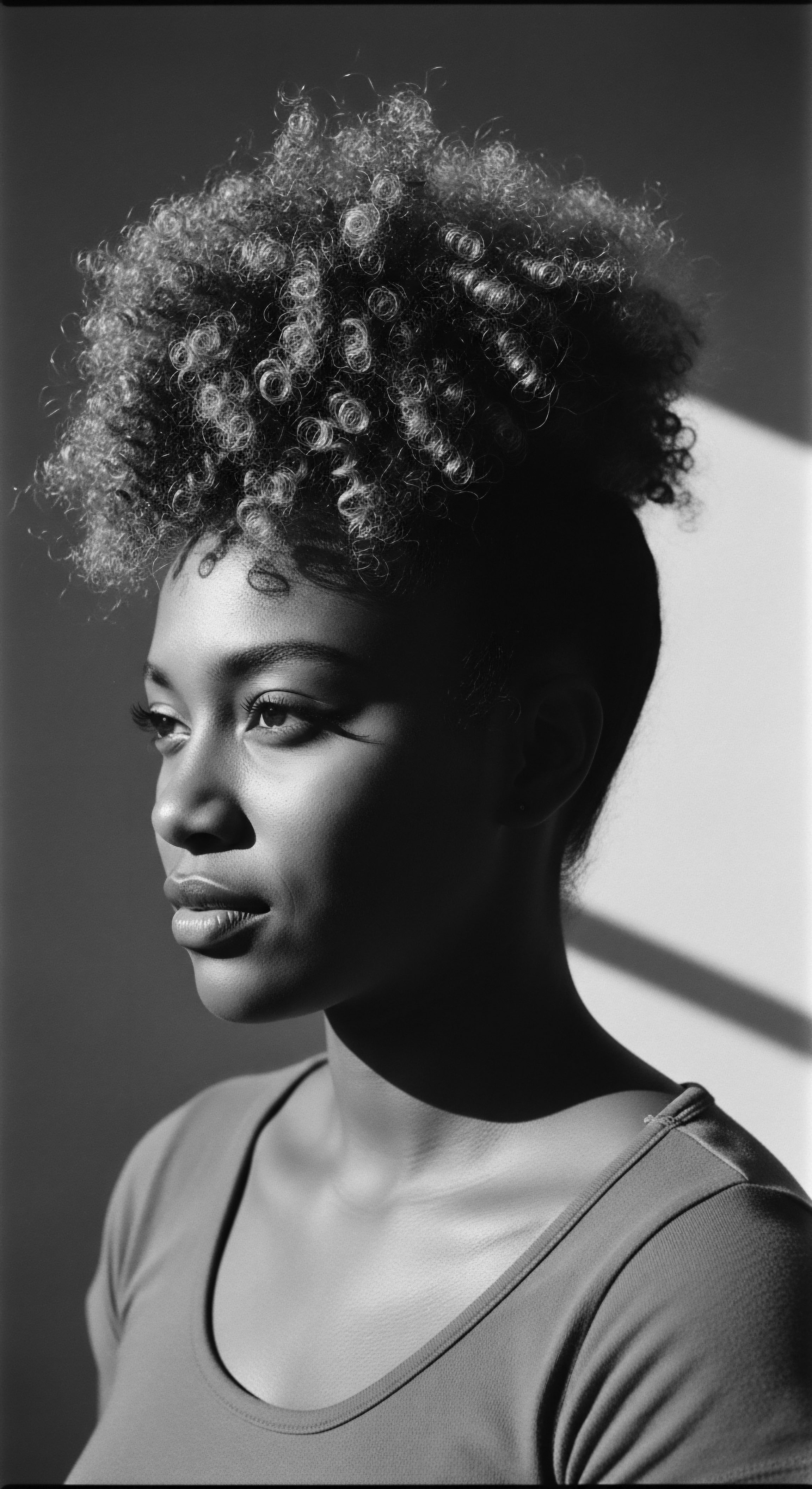
Whispers of the Earth Our First Nourishers
Before laboratories synthesized compounds, the earth herself offered the apothecary. The earliest care for coiled hair relied solely on nature’s dispensary. Ingredients like rich plant butters, viscous seed oils, cleansing clays, and fragrant botanicals were not just applied; they were understood as extensions of the land’s generosity, a connection to the cycles of growth and renewal. These materials, harvested with reverence, spoke of a direct dialogue between humanity and its environment.
The application of these ingredients was not a casual act. It often involved ritual, song, or communal gathering, deepening the bond between the hair, the care, and the collective memory. The wisdom in these practices, transmitted orally across centuries, provided an informal yet immensely effective lexicon for hair care, a language spoken through the hands and through the properties of the living world. The ancestral understanding of botanical properties was a sophisticated, experiential science, refined over countless generations.
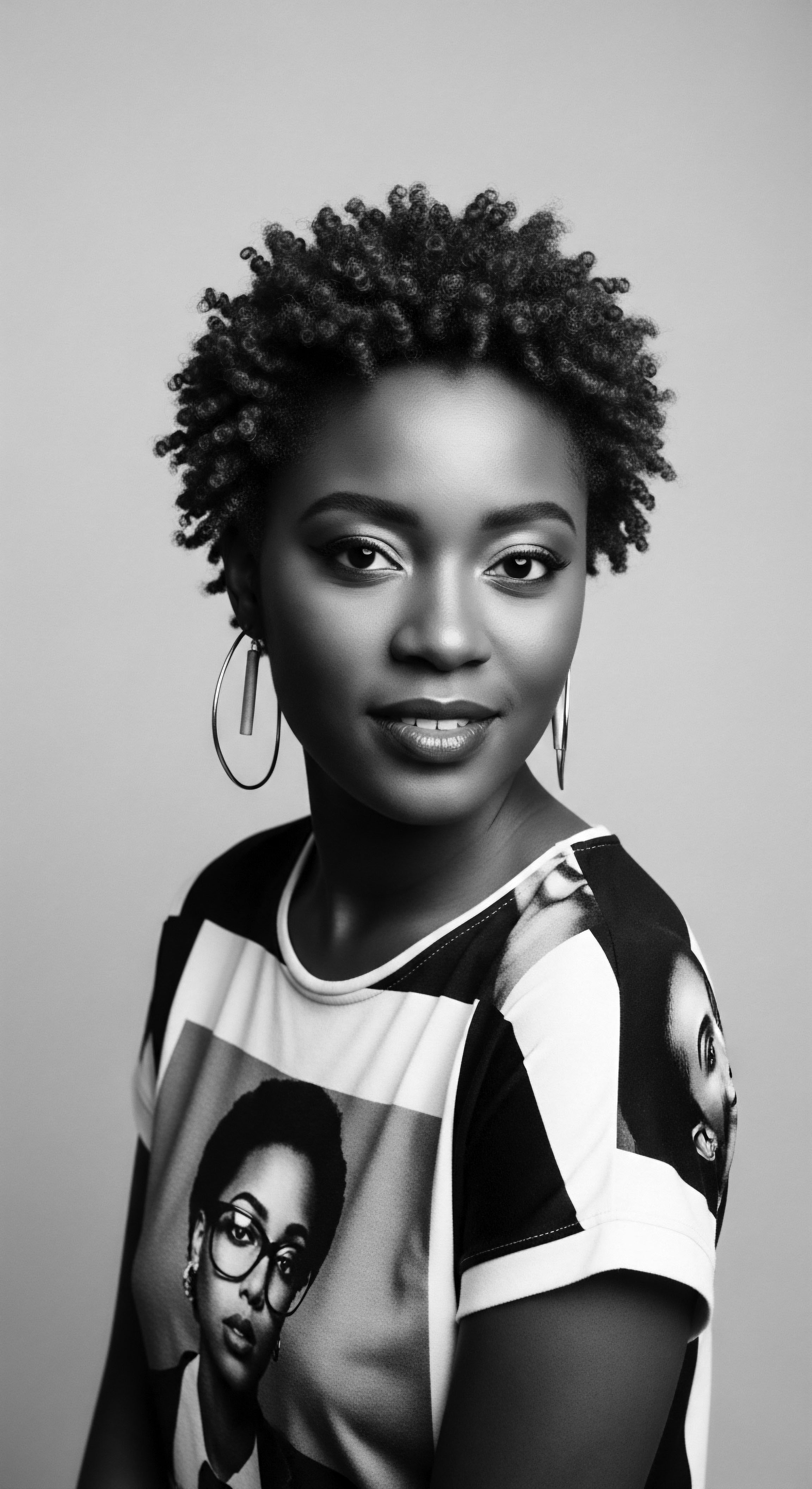
Ritual
The story of coiled hair care moves beyond fundamental understanding into the realm of action, of intentional tending. Traditional ingredients find their power not just in their inherent properties, but in the ways they have been incorporated into enduring practices, into the very rituals of styling and adornment. These practices, honed over centuries, represent a dialogue between human hands and natural materials, shaping not only physical appearance but cultural identity itself. How do these time-honored applications of earth’s offerings continue to shape our styling heritage today?

Adornments of Resilience Protective Styles Through Time
Long before the contemporary natural hair movement championed protective styling, African communities utilized intricate braiding, twisting, and locking techniques, not merely for beauty, but for the health and preservation of their coiled hair. These styles served as a shield against harsh environments, a means of preserving length, and a canvas for cultural expression. Traditional ingredients were integral to their creation and maintenance.
Consider the application of oils and butters before and during the styling process. Plant-derived oils, such as those from the shea tree or the coconut palm , would be massaged into the scalp and along the hair strands, preparing the hair for manipulation. These emollients reduced friction, enhanced flexibility, and locked in moisture, which was particularly important for styles that could remain in place for extended periods. The ritual of parting, sectioning, and braiding often became a communal event, sharing knowledge and strengthening bonds.
| Traditional Ingredient Shea Butter (Vitellaria paradoxa) |
| Ancestral Use for Coiled Hair Deep conditioning, scalp protection, moisture sealing, styling hold for braids. |
| Contemporary Relevance Emollient in conditioners, stylers, and scalp treatments for dryness, breakage. |
| Traditional Ingredient Coconut Oil (Cocos nucifera) |
| Ancestral Use for Coiled Hair Pre-shampoo treatment, shine enhancer, detangler, scalp massage oil. |
| Contemporary Relevance Penetrates hair shaft, reduces protein loss, adds luster to modern formulas. |
| Traditional Ingredient Aloe Vera (Aloe barbadensis miller) |
| Ancestral Use for Coiled Hair Soothing scalp, mild cleansing, light hold for styling. |
| Contemporary Relevance Humectant in gels, leave-ins, provides slip for detangling, scalp relief. |
| Traditional Ingredient Rhassoul Clay (Moroccan Lava Clay) |
| Ancestral Use for Coiled Hair Gentle cleansing, detoxification, mineral conditioning for scalp and hair. |
| Contemporary Relevance Detox masks, clarifying shampoos, adding volume without stripping. |
| Traditional Ingredient These traditional ingredients persist in modern care, their ancient properties still serving the fundamental needs of coiled hair. |

The Hand’s Wisdom Defining Coils with Ancestral Touch
Beyond protective styles, the desire to define and celebrate the natural formation of coiled hair is a historical one. Traditional techniques for enhancing curl definition often involved the judicious use of water, plant-based gels, and oils. The manipulation of the strands with wet hands, sometimes coiled around a finger or sectioned precisely, would encourage the natural pattern to reveal itself.
Plant mucilages, from sources like flaxseed or okra , provided a natural, lightweight hold, allowing coils to clump and maintain their shape without stiffness. These natural fixatives were combined with ingredients that imparted moisture and a healthy sheen, creating styles that were both defined and supple. This ancestral knowledge of working with the hair’s inherent inclinations, rather than fighting against them, finds a profound connection with contemporary approaches to natural curl definition.
From scalp massages to styling application, the ritual of care infused traditional ingredients with meaning, transforming them into tools of cultural preservation.
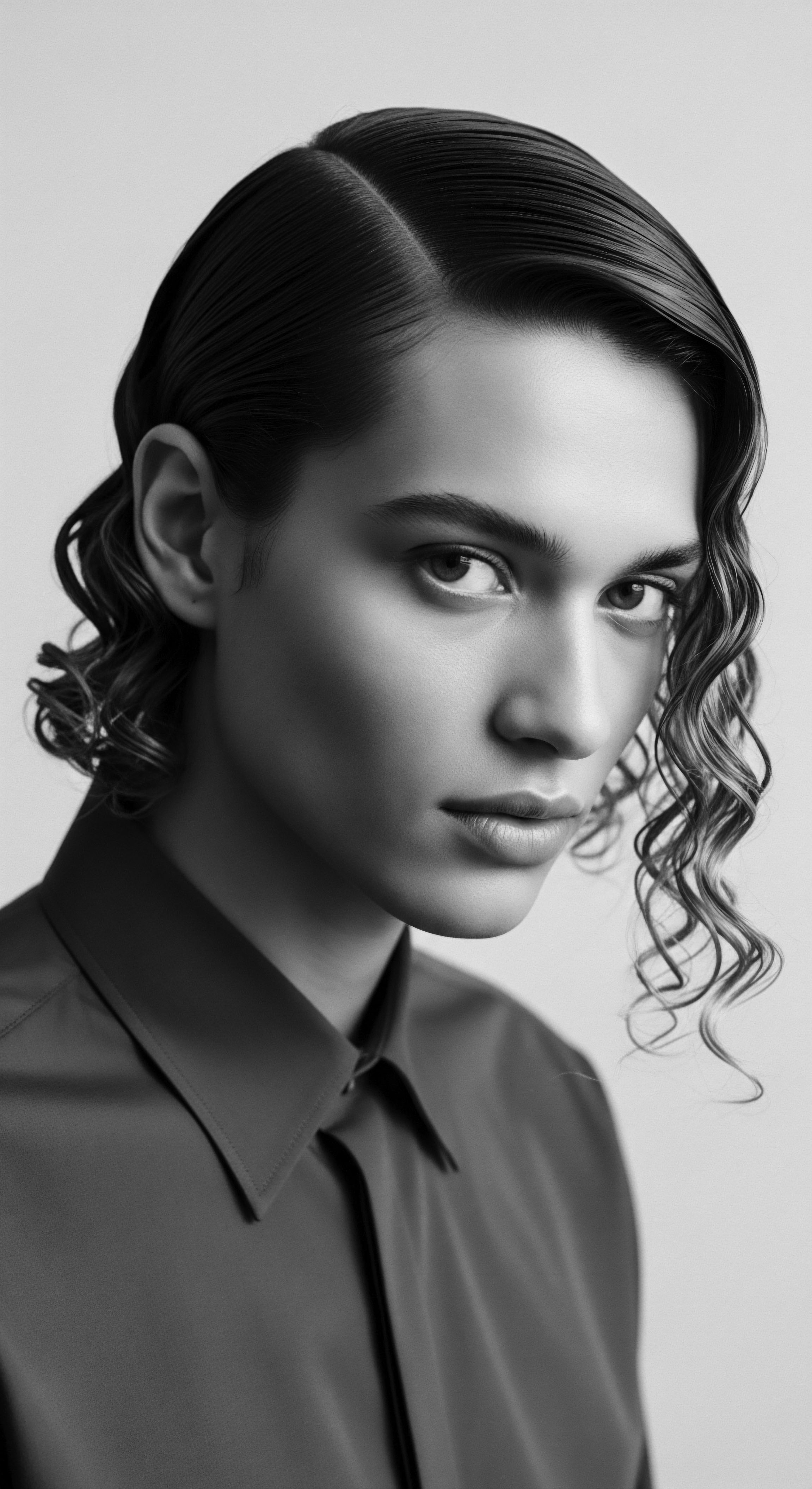
Tools of Lineage Beyond the Modern Comb
The tools used in traditional hair care were often as thoughtfully crafted as the styles themselves. Bone combs, wooden picks, and intricately carved hairpins were not merely functional; they were artistic expressions, sometimes imbued with symbolic significance. These tools, often fashioned from natural materials, worked in concert with the traditional ingredients, distributing oils, detangling gently, and aiding in the creation of complex styles.
The practice of finger-detangling, a widely celebrated method in today’s coiled hair community, mirrors ancient techniques where the hands served as the primary tools, guided by the slippage provided by oils or plant rinses. This gentle approach minimized breakage, respecting the delicate nature of coiled strands. The legacy of these tools and techniques, simple yet profoundly effective, continues to shape how we approach the manipulation and adornment of textured hair.
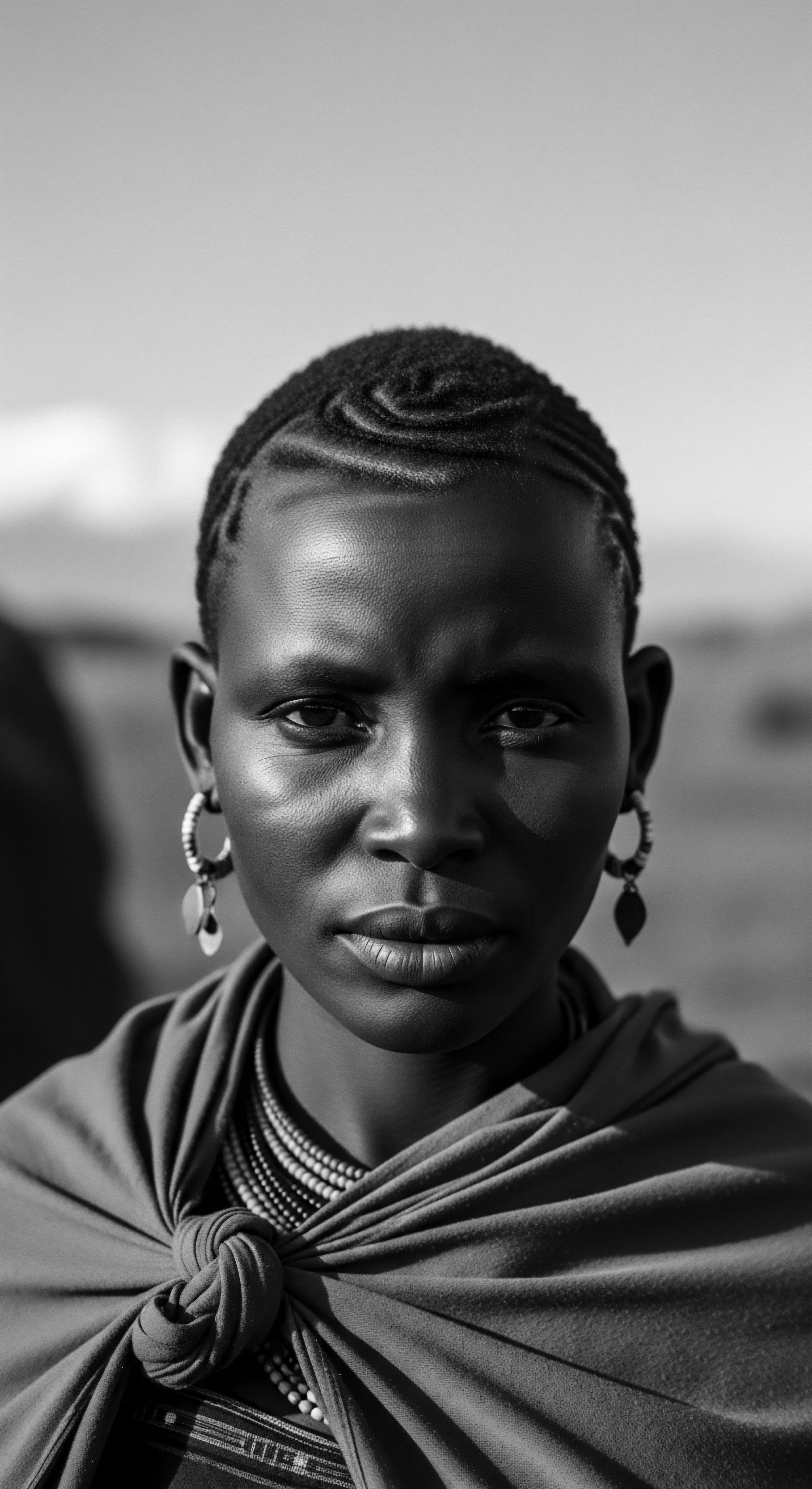
Relay
The wisdom of ancestors, carried in the very molecular structure of traditional ingredients, continues its journey through time, informing our daily practices and guiding us in the dilemmas of modern hair care. The relay of this heritage is not just historical recount; it is a living, breathing application in our routines, a beacon for holistic wellbeing. How do these time-honored remedies, these ingredients steeped in ancestral wisdom, solve challenges for coiled hair today?
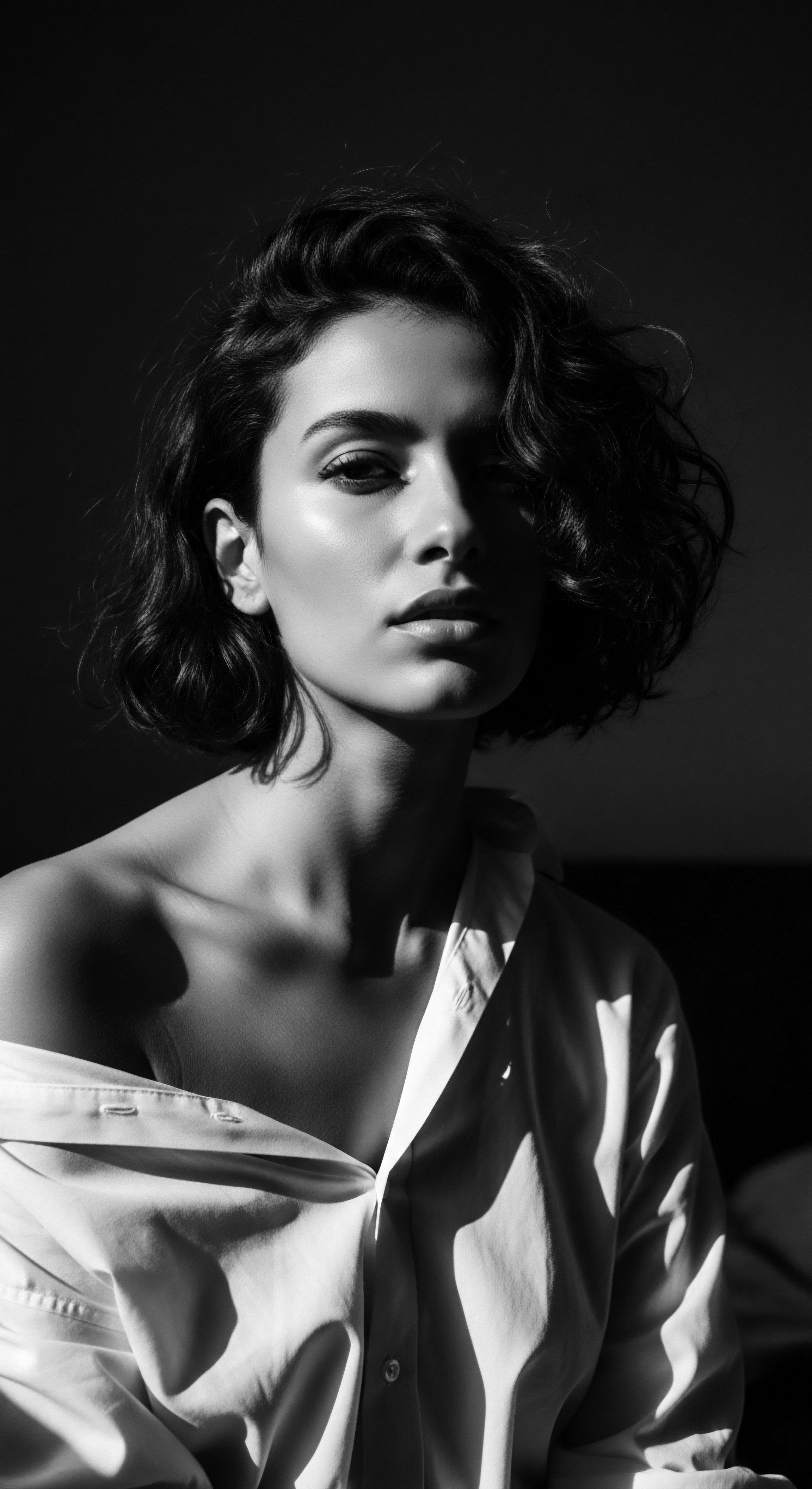
The Daily Testament Crafting Regimens from Ancient Rhythms
A structured regimen for coiled hair care, far from being a modern invention, has roots deep in ancestral practices. These routines, though unwritten in clinical journals, were meticulously passed down, each step serving a purpose ❉ cleansing, conditioning, sealing, and protecting. The ingredients chosen for these sequences were those readily available and historically proven within their local ecosystems.
- Cleansing Clays ❉ Mineral-rich clays, such as rhassoul clay from Morocco or various types of bentonite, were used for gentle cleansing. These clays absorb impurities and excess oil without stripping the hair’s natural moisture, leaving it feeling soft and conditioned.
- Botanical Rinses ❉ Infusions of herbs like hibiscus , rosemary , or fenugreek provided mild cleansing, stimulated the scalp, and imparted shine. These botanical waters were often the first step, preparing the hair for deeper nourishment.
- Nourishing Oils and Butters ❉ After cleansing, substantial plant oils like castor oil , olive oil , or jojoba oil were applied to seal in moisture and protect the strands. Butters, such as shea or cocoa butter , offered heavier protection and conditioning, especially for the ends.
These steps represent a timeless approach to hair care ❉ working with the hair’s natural state, honoring its need for hydration, and fortifying its structure through natural means. Modern regimens, when truly effective for coiled hair, echo these fundamental principles.

Slumber’s Embrace Protecting Heritage by Night
The care of coiled hair does not cease with the setting sun; nighttime rituals are as ancient as they are essential. Protecting the hair during sleep minimizes friction, preserves moisture, and maintains styling efforts. The use of head coverings, often made from soft, smooth materials, is a practice with deep historical precedence, serving both practical and ceremonial purposes.
In many West African cultures, headwraps and turbans were not only expressions of beauty and social status but also served as practical tools for hair preservation. The smooth fabrics, such as silk or satin, which we value today in bonnets and pillowcases, mimic the traditional use of finely woven materials that reduced snagging and moisture loss. This quiet nightly ritual ensures the longevity of length and the vitality of the strands, a testament to inherited wisdom.
Nighttime care, a silent tradition, safeguards coiled hair, preserving its moisture and shape for the coming day.
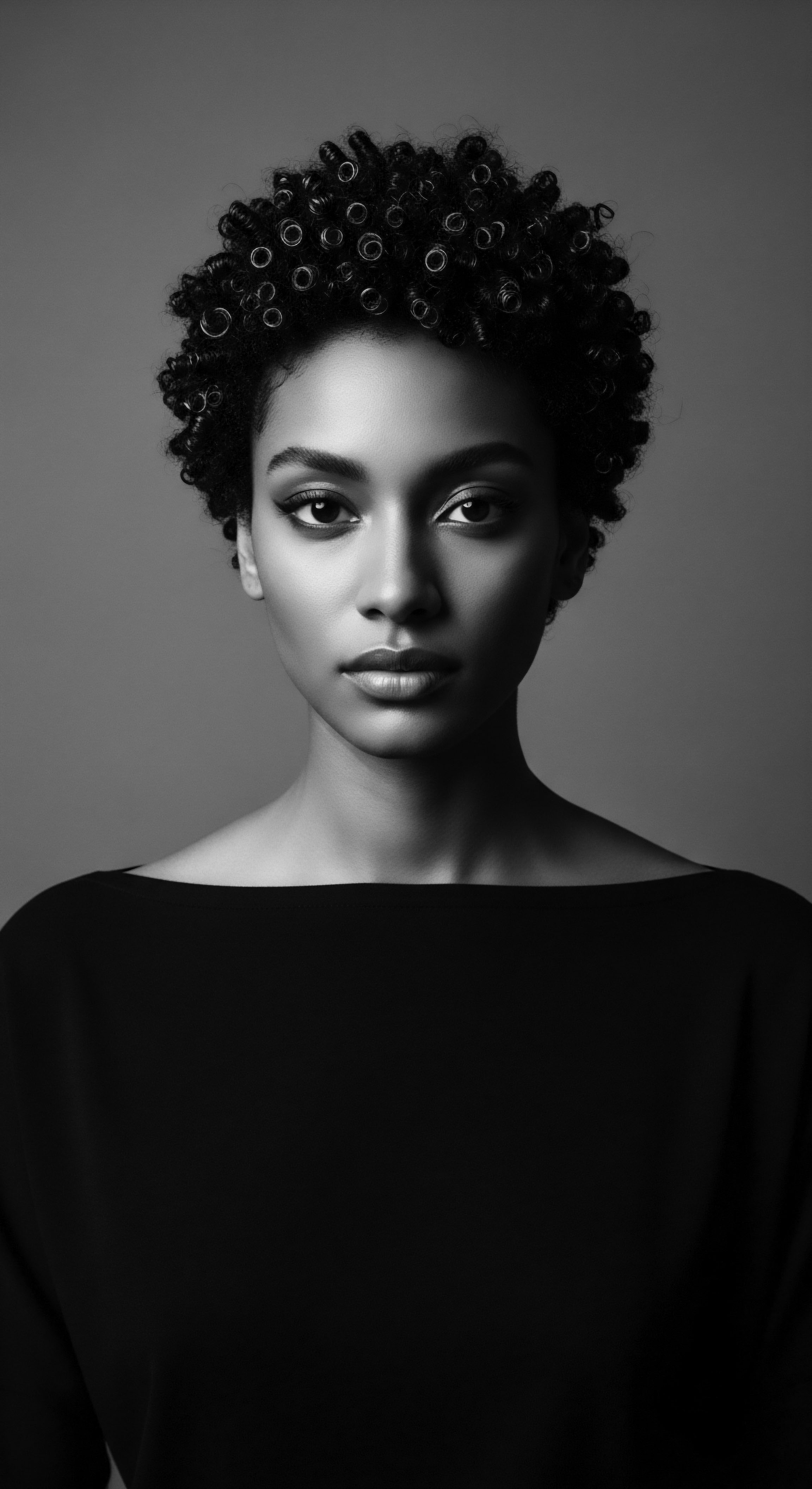
The Earth’s Bounty Echoes in Every Strand
The true power of traditional ingredients lies in their synergistic relationship with coiled hair’s inherent biology. We delve into specific examples, where ancestral wisdom meets contemporary understanding.

Chebe Powder A Chadian Chronicle of Length
One striking example of ancestral ingenuity supporting coiled hair length and strength comes from the Basara Arab women of Chad. For centuries, these women have employed a regimen centered around chebe powder , a finely ground mixture primarily from the Croton gratissimus shrub seeds, alongside other ingredients like cloves and resin. Applied as a paste with oils, often after braiding or twisting, this ritual has allowed them to achieve remarkable hair lengths, often reaching their waists or beyond, despite the arid climate.
The traditional method involves wetting the hair, applying a mixture of chebe and oil, then braiding it, repeating the process over days or weeks without rinsing the powder out. This creates a protective coating around the hair shaft, significantly reducing breakage and retaining moisture. An anthropological study from the University of Cairo documented how Chadian women maintain their hair length despite harsh desert conditions that would typically cause severe dryness and breakage, attributing this phenomenon to the consistent application of Chebe, which effectively seals the cuticle and protects the hair from environmental stressors (WholEmollient, 2025). This practice is a living testament to the efficacy of traditional methods in directly addressing the challenges of coiled hair fragility and moisture retention.

From Shea to Seed Potent Plant Gifts
Beyond Chebe, numerous plant-derived ingredients continue their ancestral work.
- Shea Butter ❉ From the shea tree, native to West Africa, its rich, creamy texture has protected skin and hair for millennia. Its high content of fatty acids and vitamins A and E offers profound conditioning, acting as a natural sealant to hold moisture within the hair shaft, and providing natural UV protection. Its application forms a protective barrier, reducing moisture loss and breakage.
- Coconut Oil ❉ A ubiquitous staple in many tropical regions, its unique molecular structure allows it to penetrate the hair shaft, not just coat it. This penetration helps to reduce protein loss from hair, a common concern for coiled textures that can be prone to hygral fatigue. Its regular application historically led to greater hair resilience and luster.
- Aloe Vera ❉ Celebrated across Africa, the Middle East, and the Americas, the mucilaginous gel from the aloe plant offers soothing properties for the scalp, reducing irritation. As a humectant, it draws moisture from the air into the hair, providing slip for detangling and light conditioning. Its use reflects an ancient understanding of scalp health as foundational to hair vitality.
These are but a few examples from a grand compendium of traditional ingredients, each carrying specific properties that address the needs of coiled hair, a legacy of observation and practice.

Addressing the Strand’s Woes Wisdom from the Elders
Many common challenges faced by coiled hair today, such as dryness, breakage, and scalp irritation, were understood and addressed through ancestral wisdom. The solutions often lay in the consistent, patient application of traditional ingredients, tailored to specific needs.
| Coiled Hair Challenge Dryness and Brittleness |
| Traditional Ingredient/Practice Regular application of shea butter and various plant oils. |
| Supporting Mechanism (Ancestral/Modern) Ancestral ❉ Observed moisture retention. Modern ❉ Lipid barrier creation, fatty acid replenishment. |
| Coiled Hair Challenge Breakage and Length Retention |
| Traditional Ingredient/Practice Protective styles with chebe powder or rice water rinses. |
| Supporting Mechanism (Ancestral/Modern) Ancestral ❉ Physical protection, strengthening. Modern ❉ Protein reinforcement, cuticle sealing, reduction of friction. |
| Coiled Hair Challenge Scalp Irritation and Flaking |
| Traditional Ingredient/Practice Aloe vera gel, herbal infusions like neem or rosemary . |
| Supporting Mechanism (Ancestral/Modern) Ancestral ❉ Soothing, cleansing. Modern ❉ Anti-inflammatory, antimicrobial properties, pH balancing. |
| Coiled Hair Challenge The enduring effectiveness of these traditional approaches speaks to their profound connection to the unique biology of coiled hair. |
The knowledge embedded within these practices reminds us that solutions for our hair have often been present for generations, awaiting our renewed attention and appreciation.
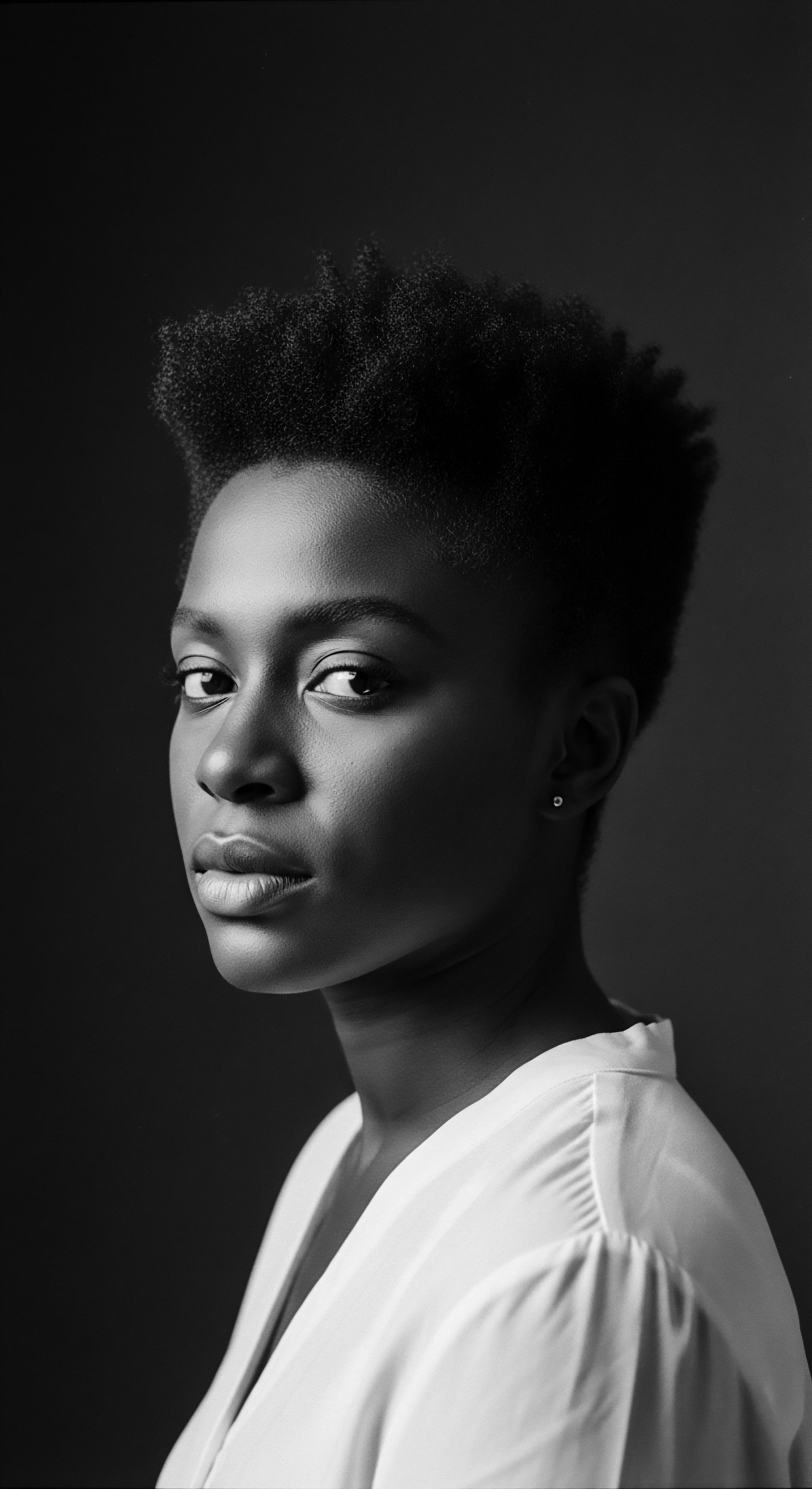
Holistic Influences on Hair Health
For ancestral communities, hair care was rarely an isolated act. It was deeply integrated into holistic wellbeing, connected to diet, spiritual practices, and community life. The health of the body reflected in the vitality of the hair. Traditional ingredients, therefore, were sometimes applied with an understanding of their internal benefits as well.
For example, practices might include consuming nutrient-rich plants alongside their topical application to the hair and scalp. This holistic view, where external applications work in concert with internal nourishment and overall lifestyle, offers a profound lesson for contemporary hair wellness. It reminds us that truly healthy coiled hair is a manifestation of overall vitality, deeply rooted in a lineage of complete wellbeing.

Reflection
We stand today at a crossroads, where ancient echoes meet the hum of modernity. The question of how traditional ingredients support coiled hair heritage today resolves itself into a profound acknowledgment ❉ they are the very carriers of that heritage. Each application of shea butter, each gentle combing through with a wooden pick, each careful braiding of a protective style, is a quiet conversation with those who walked before us. These are not merely ingredients; they are tangible memories, living practices that tie us to a shared past of resilience and beauty.
The enduring efficacy of these natural gifts speaks volumes about ancestral ingenuity, a testament to generations of keen observation and respectful interaction with the earth. They teach us that true wealth lies not in synthetic innovation, but in the sustained wisdom of our origins. The care of coiled hair, then, becomes a sacred act of remembrance, a way of honoring the legacy woven into every strand. This tradition, passed hand to hand, generation to generation, continues its powerful relay, ensuring that the soul of a strand remains vibrant, strong, and deeply connected to its rightful place in history and its unfolding future.

References
- WholEmollient. (2025). The Forgotten Wisdom of Chebe & Qasil ❉ What Modern Hair Care Is Missing.
- Akanmori, E. (2015). African hairstyles ❉ Cultural significance and legacy.
- Essel, O.Q. (2017). Afrocultural aesthetics ❉ An inquiry into Black beauty standards.
- Essel, O.Q. (2023). The cultural significance and legacy of hairstyles in African societies.
- Botsio, L. Essel, O.Q. & K. Emmanuel, R. (2023). Historical Roots of Makai Hairstyle of Elmina People of Ghana. ResearchGate.
- M. Yetein, H. G. Houessou, L. O. Lougbégnon, T. O. Teka, & B. Tente. (2013). Ethnobotanical study of medicinal plants used for the treatment of malaria in plateau of Allada, Benin (West Africa). Journal of Ethnopharmacology.
- Abbasi, A. M. et al. (2010). Ethnobotanical survey of plants used in folk cosmetics in Northern Pakistan. African Journal of Biotechnology.
